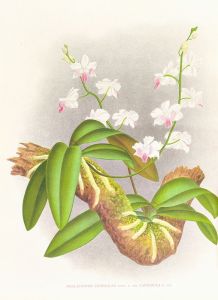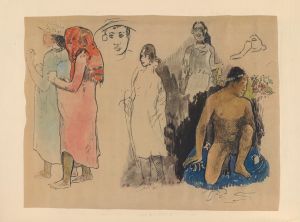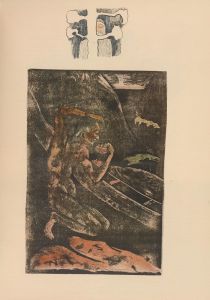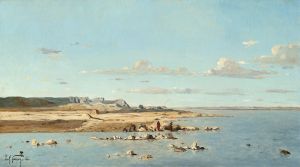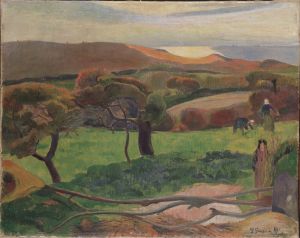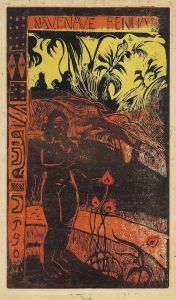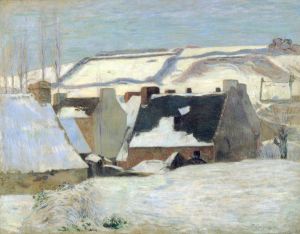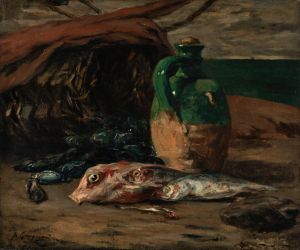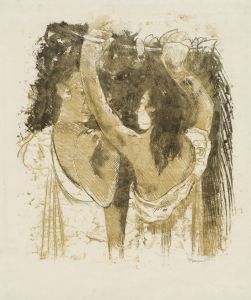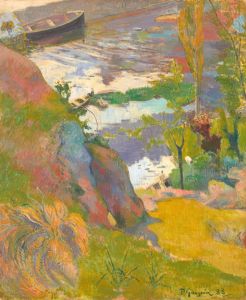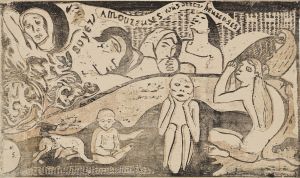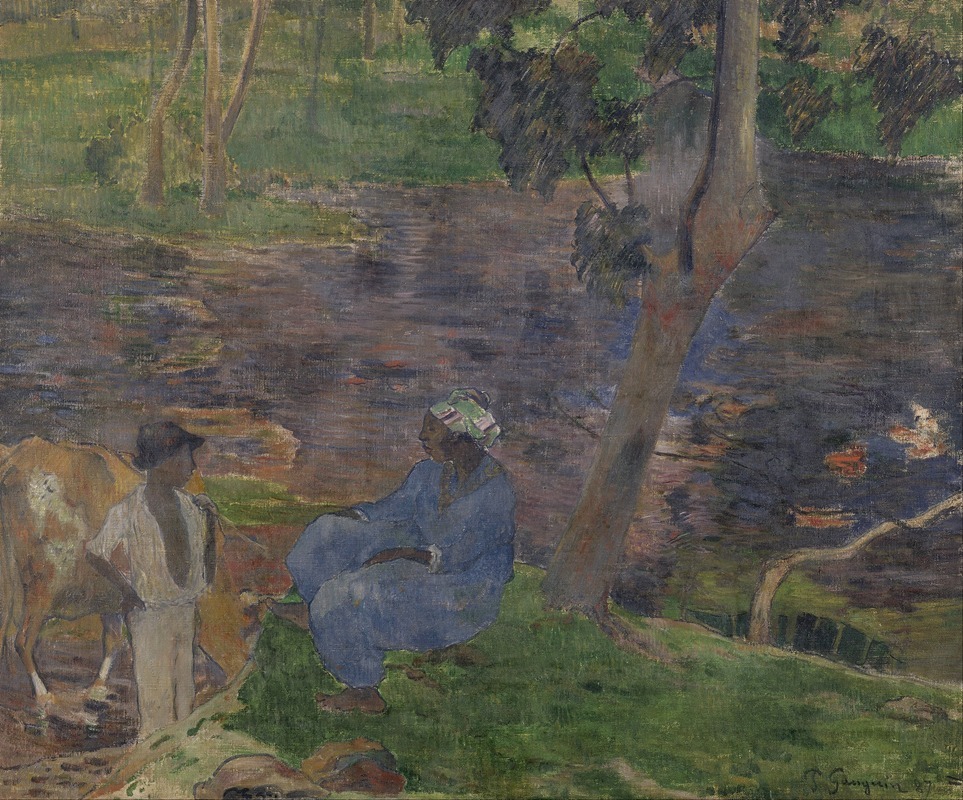
On the Banks of the River at Martinique
A hand-painted replica of Paul Gauguin’s masterpiece On the Banks of the River at Martinique, meticulously crafted by professional artists to capture the true essence of the original. Each piece is created with museum-quality canvas and rare mineral pigments, carefully painted by experienced artists with delicate brushstrokes and rich, layered colors to perfectly recreate the texture of the original artwork. Unlike machine-printed reproductions, this hand-painted version brings the painting to life, infused with the artist’s emotions and skill in every stroke. Whether for personal collection or home decoration, it instantly elevates the artistic atmosphere of any space.
Paul Gauguin's painting "On the Banks of the River at Martinique" is a notable work from the artist's time spent in the Caribbean. Gauguin, a French post-impressionist artist, is renowned for his bold use of color and synthetist style that set him apart from his contemporaries. This particular painting is part of a series of works created during his stay in Martinique in 1887, a period that significantly influenced his artistic development.
Gauguin traveled to Martinique with fellow artist Charles Laval in search of new inspiration and to escape the European art scene, which he found stifling. The island's lush landscapes, vibrant colors, and the simplicity of life there captivated Gauguin and provided a fresh perspective that would inform his later works. During his time on the island, Gauguin produced several paintings that depicted the tropical environment and the local people, capturing the essence of the island's natural beauty and its cultural atmosphere.
"On the Banks of the River at Martinique" exemplifies Gauguin's fascination with the exotic and his departure from traditional European artistic conventions. The painting showcases a vivid landscape, characterized by its rich palette and dynamic composition. Gauguin's use of color in this work is particularly striking; he employs bold, contrasting hues to convey the intensity of the tropical environment. The lush greenery, the flowing river, and the bright sky are rendered in a way that emphasizes their vibrancy and vitality.
The composition of the painting reflects Gauguin's interest in the natural world and his desire to capture the spirit of the place. The scene is populated with figures that blend harmoniously into the landscape, suggesting a unity between the people and their environment. This integration of human figures within the natural setting is a recurring theme in Gauguin's work, highlighting his belief in the interconnectedness of humanity and nature.
Gauguin's time in Martinique was relatively short, lasting only a few months, but it was a period of intense creativity and exploration. The works he produced during this time, including "On the Banks of the River at Martinique," are considered pivotal in his artistic evolution. They mark a transition from his earlier impressionist influences to a more personal style that would later be fully realized in his paintings from Tahiti and the Marquesas Islands.
The painting is also significant for its role in Gauguin's development of a more symbolic approach to art. By moving away from the detailed realism of his earlier works, Gauguin began to focus on the emotional and spiritual aspects of his subjects. This shift is evident in the way he uses color and form to evoke a sense of place and mood, rather than merely depicting a scene.
Today, "On the Banks of the River at Martinique" is appreciated not only for its aesthetic qualities but also for its historical importance in Gauguin's oeuvre. It represents a key moment in his journey as an artist, reflecting his quest for new experiences and his desire to break free from the constraints of conventional European art. The painting remains a testament to Gauguin's innovative spirit and his enduring influence on the development of modern art.






